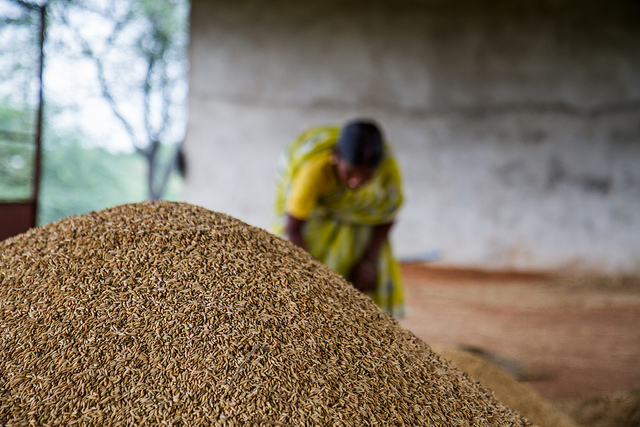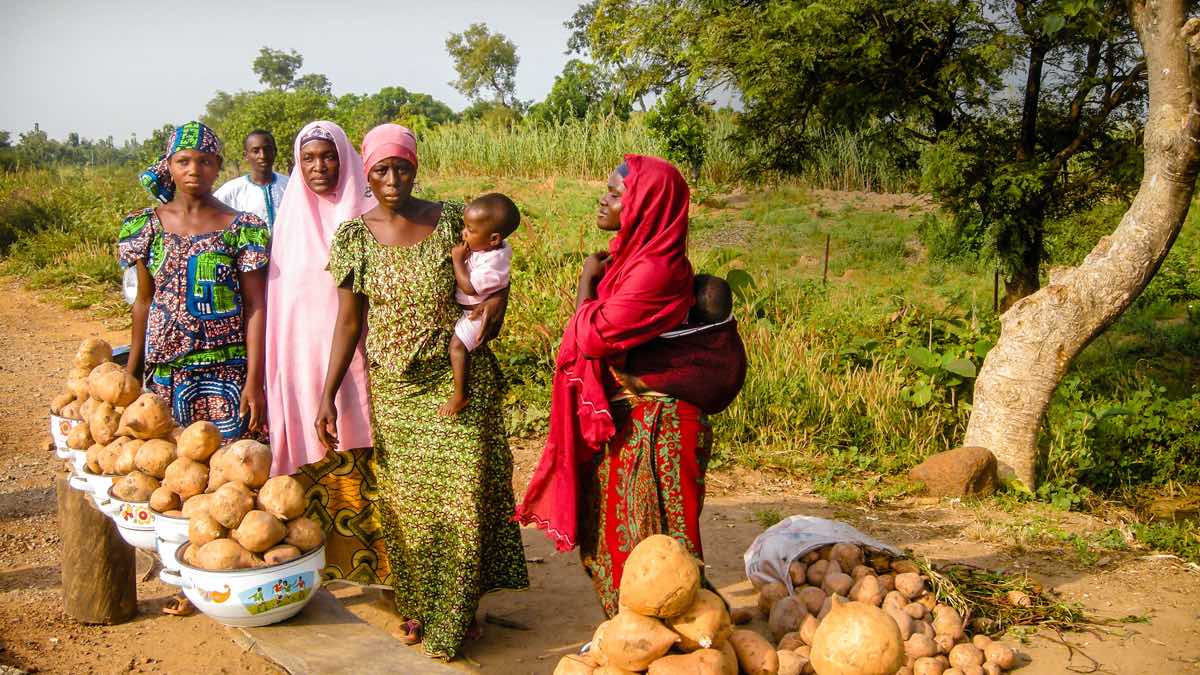Ignoring hunger and malnutrition will have significant costs to any country’s development. Nutrition improvement has both intrinsic and instrumental value.
The following story by S. Mahendra Dev, Director of the Indira Gandhi Institute of Development Research and IFPRI Board member, was originally published on the online version of The Hindu.
One of the disappointments in the post-reform period in India has been the slow progress in the reduction of malnutrition, especially with reference to the underweight among children. In fact, the rate of change in the percentage of underweight children has been negligible in the period 1998-99 to 2005-06; the only two points of data in recent years on undernutrition from the National Family Health Survey (NFHS)-II and -III. In this phase, the proportion of underweight children in the age group 0-3 years declined only marginally from 47 per cent to 46 per cent.
The reduction in malnutrition among children has been very slow when compared to rapid economic growth in the post-reform period. International studies show that the rate of decline in child undernutrition tends to be around half the rate of growth of per capita GDP. As Angus Deaton and Jean Drèze have said in an article on nutrition, in India’s case, per capita GDP of about 4.2 per cent during 1990 and 2005 was expected to reduce malnutrition by about 2.1 per cent per annum or 27 per cent during this period. Compared to this, the decline in malnutrition among children was only 10 per cent.
Economic growth and nutrition
However, the 2014 Global Hunger Index report of the International Food Policy Research Institute (IFPRI) shows considerable improvement in India’s hunger index and in the percentage of underweight children — from 24.2 in 2005 to 17.8 in 2014 — an increase of 6.4 points. Also, out of 76 countries, India’s rank improved by around 8 points, from 63 to 55. While India is no longer in the category of “alarming” cases, its hunger status is still classified in the category of “serious”. This improvement is attributable mainly to a reduction in the percentage of underweight children, from 43.5 per cent in 2005-06 (NFHS-III) to 30.7 per cent in 2013-14 (a survey conducted by the Ministry of Women and Child Development with support from UNICEF). This shows a remarkable reduction of 13 percentage points in eight years during 2005-06 to 2013-14. However, the latest survey is a source of encouragement regarding the reduction in undernutrition. One has to wait for a year more for the findings of NFHS-IV.
The IFPRI report attributes the reduction in undernutrition to the expansion and improvement of several programmes that have targeted a mix of the direct and indirect causes of undernutrition. These programmes and policies are: an expansion in Integrated Child Development Services (ICDS); the launch of the National Rural Health Mission (NRHM); the Mahatma Gandhi National Rural Employment Guarantee Act (MGNREGA); reforms in several States in the Public Distribution System (PDS) and targeted efforts at the State level like the Maharashtra nutrition mission. It is true that the expansion and increasing efficiency in the delivery systems of these programmes have improved the nutrition status of children. In addition, improvements in sanitation and drinking water might have also helped in enhancing nutrition.
The report should have also discussed the impact of economic growth on nutrition. It is known that India focusses on a twin-track policy of economic growth and direct universal and targeted programmes for a reduction in poverty and an improvement in social indicators. India had a high economic growth of 9 per cent per annum during 2005-06 to 2008-09, which helped in an increase in tax-GDP ratio and an allocation of higher expenditure to the social sector. Similarly, India also had a higher agriculture growth rate of 4 per cent per annum during the 11th Plan period (2007-12). This too must have helped in raising nutrition. At this point, one may ask a valid question: we had six per cent growth during the period 1992-93 to 2005-06 but why was there no significant decline in malnutrition? It may be noted that there was a decline in malnutrition during 1992-93 to 1998-99 but there was stagnation in nutrition status during 1998-99 to 2005-06. During this phase as well, economic growth and agricultural growth were relatively low.
Goal of ‘Zero Hunger’
As the IFPRI report suggests, the expansion and increase in the efficiency of the direct programmes have helped in reducing undernutrition during 2005-06 to 2013-14. However, it is fair to say that economic growth that includes high agricultural growth and direct programmes has been a responsible factor in the recent finding of a significant reduction in malnutrition. Post-2005, the development agenda at the global level has, among other things, been focussing on the elimination of hunger and malnutrition. The UN Secretary General recently announced meeting the challenge of ‘Zero Hunger’ — to be achieved by 2025. One of the elements in this challenge is to ensure zero stunted children in less than two years. If this is to be achieved at the global level, then progress in India is important.
Inspite of significant progress in the last eight years, a lot of work has to be done in order to reduce malnutrition in India. This also poses challenges at the global level because figures released by UNICEF show that in 2011, 55 million out of 102 million underweight children under five in the world — or 54 per cent of the global total — live in India. Similarly, 62 million out of 166 million stunted children of the world are from India (37 per cent). In other words, one out of two underweight children and two out of five stunted children are in India. It is true that with recent progress, the absolute numbers of children with malnutrition will come down.
It is known that a reduction in malnutrition needs the application of a multi-pronged strategy. The determinants of malnutrition are agriculture, health, women’s empowerment including maternal and child care practices, ensuring sanitation, enabling safe drinking water, and activating social protection programmes and nutrition education apart from economic growth, as mentioned earlier. The evidence so far shows that malnutrition can be reduced by enhancing women’s health, promoting gender equality and ensuring the empowerment of women including female education. Gender equality and the well-being of children go hand in hand. The rights of women and children are mutually reinforcing. Gender empowerment is relatively better in Africa. Although poverty and other numbers are higher in South Asia, Africa had a lesser percentage of children under nutrition than South Asia because of better women’s status.
Agriculture and nutrition
Recently, there has been a lot of emphasis on the linkages between agriculture and nutrition, which can be improved by three entry points. The first of these is in ensuring inclusiveness and equity in agriculture that can be achieved by increasing agricultural productivity in rainfed and resource-poor areas. This in turn will help raise the productivity and income of small and marginal farmers. The bulk of the rural poor, as well as small and marginal farmers, live in such resource-poor areas, where undernutrition is largely prevalent. The second is in policies to diversify diet in order to improve micronutrients and the third is in having agricultural policies to empower women. In all this, it must not be forgotten that climate change poses a major challenge to agriculture.
This year is the International Year of Family Farming; it needs to be noted that Dr. M.S. Swaminathan has often mentioned the importance of family farming in offering an effective and an economic solution to ensuring that every person has access to nutritious food. Biofortication is one way of having access to micronutrients. According to Prof. Swaminathan, we should also help promote naturally biofortified crops such as sweet potato, moringa (drumsticks), bread fruit and various berries which are rich in micronutrients such as iron, zinc, vitamin A and vitamin C.
The importance of sanitation and safe drinking water in reducing malnutrition is well known. Therefore, ensuring improvements in sanitation is urgently needed as it is a big predictor of malnutrition.
It is heartening to see that social protection programmes have helped in improving nutrition. Further, the strengthening of social protection programmes like ICDS, PDS, mid-day meal schemes and MGNREGA are needed to achieve nutrition security. Although delivery systems have improved in programmes like PDS, the leakages are still high.
A recent survey of women and child welfare does not give us the numbers at the State level. This must be noted as figures for 2005-06 show that the proportion of children who are underweight is high in States such as Madhya Pradesh (60.3 per cent), Jharkhand (59.2 per cent), Bihar (59 per cent), Chhattisgarh (52 per cent) and Uttar Pradesh (47.3 per cent). Therefore, there is a need to focus on these States.
The consequences of undernutrition are well known. Stunting and undernutrition are the main contributing factors for child mortality, disability and disease. There are also the harmful effects of an inadequate intake of specific micronutrients essential for brain development and the nervous system. For example, iron deficiency is known to affect a child’s performance in school. In short, “hidden hunger” has to be reduced.
In conclusion, it has to be recognised that ignoring hunger and malnutrition will have significant costs to any country’s development. Nutrition improvement has both intrinsic and instrumental value. Some estimates indicate that there is a 2 to 3 per cent GDP loss due to low productivity. The returns to investments in food and nutrition are quite high. Every dollar spent on interventions to reduce stunting is estimated to generate about $20-$30 in economic returns. The government should understand the intrinsic value to people and instrumental value of nutrition in terms of GDP gain and returns to investment. Countries like China, Brazil and Vietnam have been successful in reducing malnutrition. Evidence of recent success shows that India is also capable of reducing undernutrition. Therefore, some urgency needs to be shown by the government and others concerned in order to eliminate hunger and malnutrition particularly among children and women.







